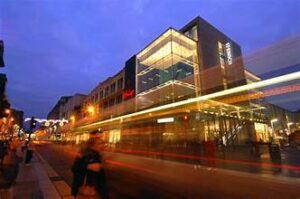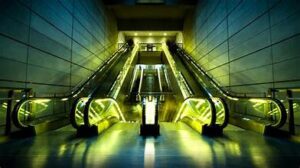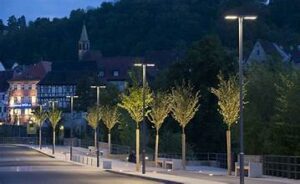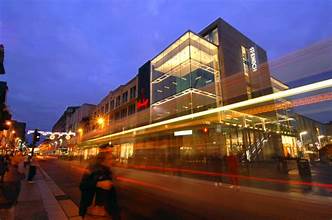
Urban exploration, often referred to as “urbex,” is an exciting way to discover the hidden gems and forgotten corners of cities. As urban explorers venture into abandoned buildings, historic sites, and modern architectural marvels, the role of lighting technology becomes increasingly pivotal in enhancing their experiences. Advanced lighting technologies not only illuminate these sites but also create immersive atmospheres that enhance safety, aesthetic appeal, and overall exploration quality. In this article, we’ll explore how cutting-edge lighting innovations are transforming urban exploration and why they matter.
The Evolution of Lighting in Urban Exploration
Traditional vs. Modern Lighting
Historically, urban exploration relied on basic flashlights and headlamps. While these tools were functional, they often lacked the sophistication needed to reveal the full beauty of urban environments. Traditional lighting methods could be inadequate in dark, intricate spaces or fail to highlight architectural details.
Modern lighting technology has revolutionized this field. Innovations such as LED lights, smart lighting systems, and dynamic lighting effects offer explorers enhanced visibility, versatility, and the ability to create tailored lighting environments.
Benefits of Advanced Lighting Technology
1. Enhanced Visibility and Safety
One of the primary advantages of advanced lighting technology is improved visibility. High-lumen LED lights can illuminate large areas with bright, clear light, making it easier to navigate dark or obscured spaces. This is particularly crucial in abandoned buildings or underground tunnels where hazards might be hidden.
Smart lighting systems with adjustable brightness levels and color temperatures allow explorers to adapt their lighting to different conditions. This adaptability not only improves safety by reducing the risk of accidents but also ensures that explorers can see the finer details of their surroundings.
2. Highlighting Architectural and Historical Features
Advanced lighting technology can also enhance the aesthetic appeal of urban exploration sites. Dynamic lighting systems can be programmed to emphasize architectural details, textures, and colors, revealing aspects of a site that might otherwise go unnoticed. For instance, colored LEDs can highlight the intricate details of historic buildings or create dramatic effects in modern structures.
Moreover, smart lighting can simulate natural light patterns, providing a more authentic experience. By mimicking the golden hues of sunrise or the cool tones of twilight, lighting technology can help explorers appreciate the architectural beauty and historical significance of urban sites in a new light.
3. Creating Immersive Environments
Lighting plays a crucial role in creating immersive experiences. Advanced technologies such as programmable LED strips, fiber optics, and projection mapping can transform ordinary spaces into visually stunning environments. For example, projection mapping can project intricate patterns or moving images onto surfaces, turning a simple wall into a canvas for artistic expression.
In urban exploration, these immersive lighting effects can enhance the sense of wonder and discovery. By manipulating light and shadow, explorers can experience familiar places in entirely new ways, adding an extra layer of excitement to their adventures.
4. Energy Efficiency and Longevity
Energy efficiency is another significant advantage of modern lighting technologies. LED lights, for example, consume significantly less power than traditional incandescent bulbs and have a much longer lifespan. This is particularly beneficial for urban explorers who may rely on portable lighting equipment during extended excursions.
Energy-efficient lighting reduces the need for frequent battery replacements or recharges, allowing explorers to focus more on their adventures and less on equipment maintenance. Additionally, lower energy consumption contributes to a reduced environmental impact, aligning with the growing emphasis on sustainability in urban exploration.
Practical Applications for Urban Explorers
1. Illuminating Abandoned Spaces
Abandoned buildings often present unique challenges due to their dimly lit or completely dark interiors. Advanced lighting solutions such as high-intensity LED flashlights and headlamps with adjustable brightness settings can ensure that explorers have a clear view of their surroundings, making it easier to navigate safely.
Portable lighting kits with rechargeable batteries and multiple light modes can be particularly useful in these settings, providing flexibility and reliability for extended explorations.
2. Enhancing Urban Photography
Urban explorers often document their adventures through photography. Advanced lighting technology can enhance these photographic endeavors by providing consistent, high-quality illumination. Portable LED panels with adjustable color temperatures and brightness levels can help capture the perfect shot, highlighting architectural details and creating stunning visual effects.
Additionally, lighting technology can assist in low-light photography by reducing the need for long exposure times, resulting in sharper and more vibrant images.
3. Improving Nighttime Exploration
Exploring cities at night presents its own set of challenges, including reduced visibility and safety concerns. Advanced lighting technology can significantly enhance nighttime exploration by providing bright, reliable illumination that covers large areas.
Headlamps with adjustable beam angles and LED lanterns with wide coverage can make nighttime urban exploration more enjoyable and safer, allowing explorers to discover hidden corners and landmarks with ease.
Conclusion
Advanced lighting technology has profoundly impacted urban exploration, offering benefits that go beyond mere illumination. By enhancing visibility, highlighting architectural features, creating immersive environments, and promoting energy efficiency, these innovations are transforming the way explorers experience and document urban landscapes. As technology continues to evolve, we can expect even more exciting advancements that will further enrich the world of urban exploration.




